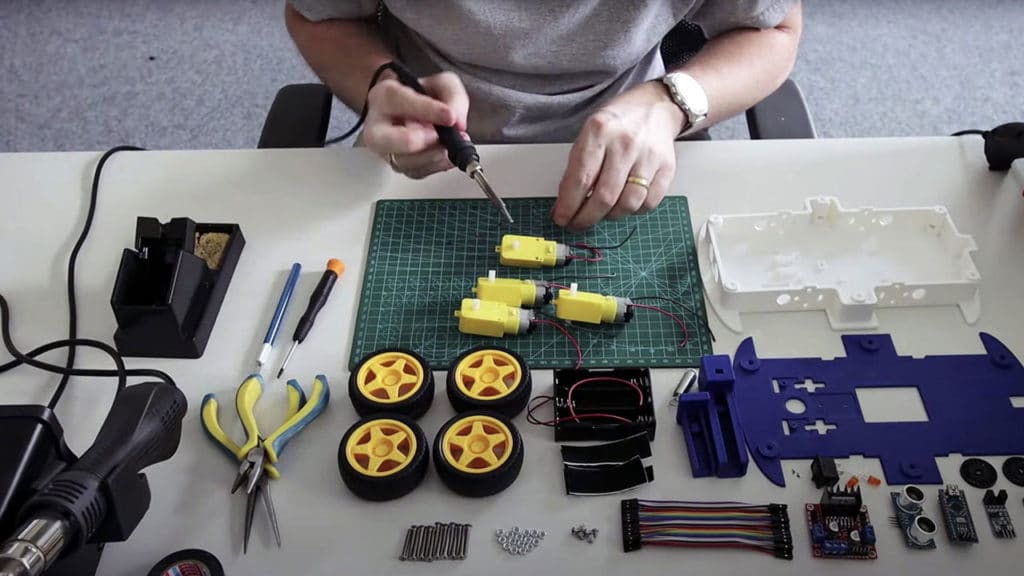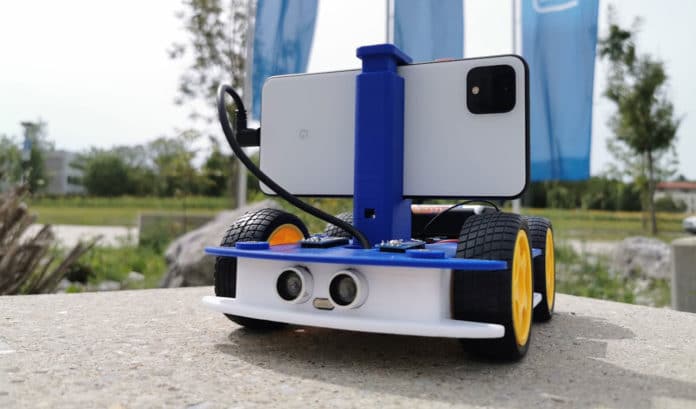Today, robot enthusiasts have quite a few options for self-assembly robots – many motors, microcontroller boards like Arduino, and single-board computers like Raspberry Pi. However, for serious tasks with computer vision, much more expensive components are needed, which dramatically increases the complexity of the robot.
Now, Intel engineers Matthias Müller and Vladlen Koltun have created a low-cost, open-source, wheeled robot powered by a smartphone, which acts as a camera and computing unit.
The project, called “OpenBot”, is proposed as a cheap but capable research platform – a balanced alternative to expensive robots based on commercially available radio-controlled models and inexpensive but computationally limited educational models. The prototype components cost the developers only $50.

Researchers take advantage of the prevalence of smartphones in humanity. According to them, more than 40% of the world’s population own smartphones. Commodity models now carry HD cameras, powerful CPUs and GPUs, advanced IMUs, GPS, Wi-Fi, Bluetooth, 4G modems, and more. Modern smartphones are even equipped with dedicated AI chips for neural network inference and other sensors that can be very useful to help the robot move.
OpenBot is the simplest that a robot can be. The cell phone connects to an electromechanical body, with a chassis made in a 3D printer capable of housing four motors, USB cable, inputs for controls, LEDs. The equipment is capable of working with a set of batteries and an Arduino Nano board to allow interaction with the smartphone via USB and collects data from the sensors.

If necessary, a common video game controller, such as an Xbox or PlayStation controller, can be connected to a smartphone via Bluetooth, allowing you to give commands to the equipment remotely. Each button can be linked to a specific action, such as data collection, switch for autonomous navigation, manual navigation, and people detection.
The researchers reinforce that, with OpenBot, they tried to face two challenges of robotics: scalability and accessibility, which it was possible to achieve with a smartphone and simple components and some knowledge of programming. At just $50, the robot supports person following and real-time autonomous navigation in unstructured environments. It can gain more functions depending on the needs of its creator.
At the time of publication, the engineers had already published on GitHub models for 3D printing the case, and also announced that they would soon publish all the necessary source code, which is still pending.
